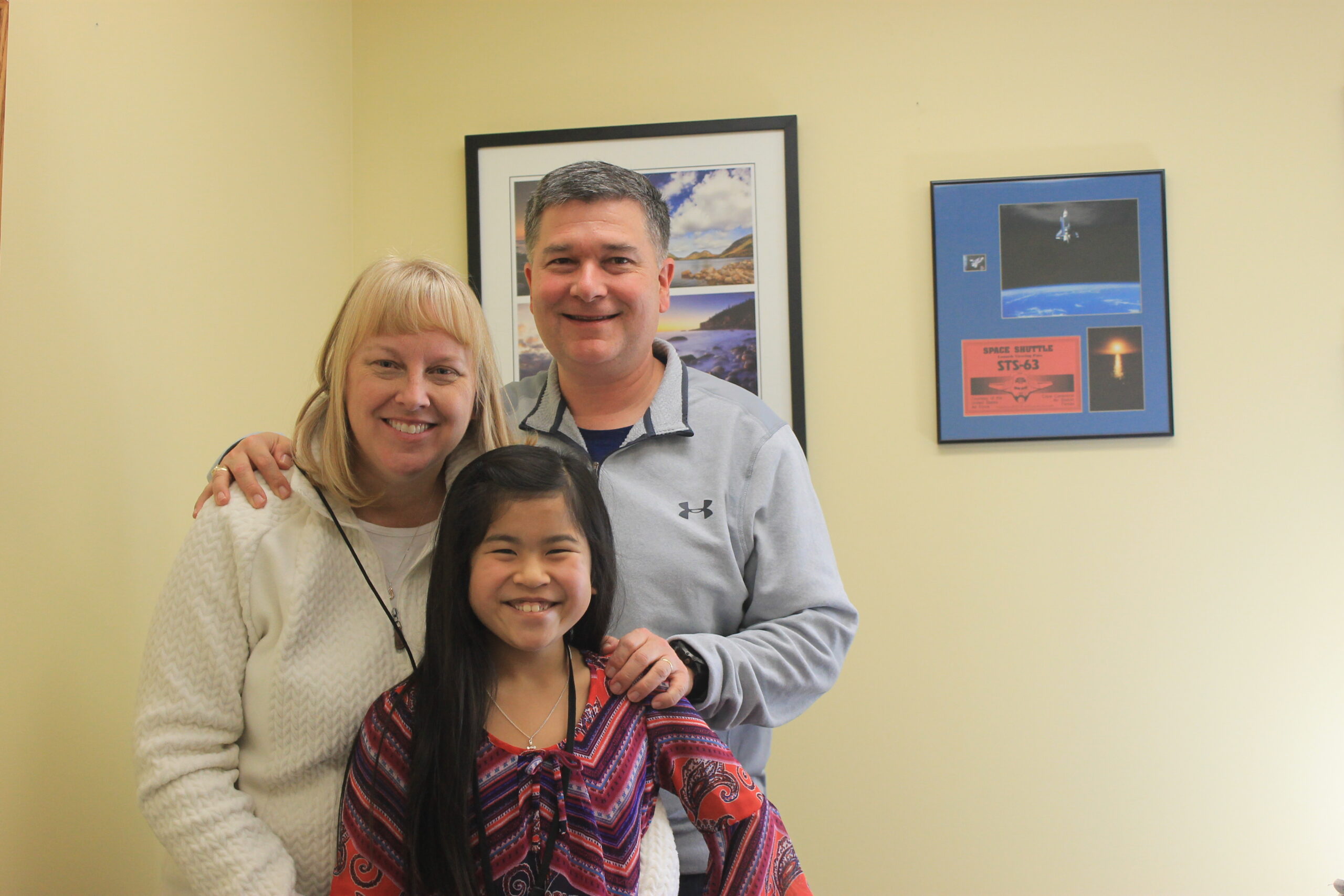
MAPLETON, Maine — Five years after receiving a cochlear implant for deafness, Faith Herweh lives pretty much like any other fifth grader.
“When I first got it, everything was really loud. I wasn’t used to having something that was loud,” recalled Faith, who received the first of two cochlear implants at age 5.
Faith plays clarinet and sings, and is doing well at school with some special equipment and a little extra help from teachers, said her parents Dixie and John.
Faith has come a long way since first being diagnosed as deaf at age 3, when the family was living in Lancaster, Pennsylvania, said Dixie.
Most people are diagnosed as deaf at birth and while they’re young receive a cochlear implant, an electronic medical device that does the work of the inner ear by sending sounds to the brain.
After Faith was diagnosed, the family was trying to teach her sign language, but it wasn’t going well, Dixie said.
“We were in the thick of it trying to learn sign. She wasn’t interested, we weren’t able to communicate and she was getting frustrated,” Dixie said.
“I ended up meeting another mother in a line at a grocery store, and her child had a cochlear implant. We just started talking and it turned out we kind of had a similar situation. She told me about this whole new approach to teaching children who are deaf.”
For a year, Dixie took Faith to a specialized school 75 miles away from their home. There, she started learning to speak and used strong hearing aids, which gave her limited hearing for the first time, Dixie said. For the first time she could here the sounds of her feet moving or the clanking of dishware.
Later, the family moved to Virginia, in the Washington, D.C., area, and Faith was attending kindergarten at another specialized school that recommended considering a cochlear implant.
“They were the ones that said to us, ‘We can get her to speak pretty well, but she has so much hearing loss, we really feel a cochlear implant would be a better option for her,’” Dixie recalled.
“We were nervous because this is a major surgery. We were afraid it may not work,” she said, adding that the procedure also comes with a risk of brain infection.
Ultimately, they decided to go with the procedure at Johns Hopkins Hospital in Baltimore.
From there it was a long period of adjustment for Faith to adapt to her new sense of sound, which is still different from natural hearing, Dixie said.
The human ear can hear many more sounds at once, such as multiple conversations and music in the background. But for Faith and others with a cochlear implant, that type of noise can sound mostly garbled. School students with cochlear implants often use special equipment where teachers wear a type of microphone linked to the students’ implant.
Faith used those microphones with her teachers in Virginia and has used them since she enrolled at Mapleton Elementary two years ago, when John Herweh took a job with MMG Insurance in Presque Isle.
Dixie and John were a little concerned about whether Faith’s new, smaller school would be able to accommodate her as easily as the large public school she previously attended in Virginia.
“We were blown away by the support that she’s received at Mapleton Elementary,” John said.
The school acquired a microphone system for Faith’s teachers to wear, and both students and teachers have also been welcoming to Faith, who was adopted from China, John said.
“Without that mic, it would be difficult for her to catch everything that’s being said. Having that special equipment lets her catch everything,” John said. “The mic helps transmit what is being said directly into the cochlear implant processor. It looks like a pen worn around the teacher’s neck.”
Moving to a smaller school district “has turned out to be a blessing,” said Dixie. “I think she’s getting even more individualized care here than she did even somewhere that had a dedicated program for the deaf.”
Faith will have to have her cochlear implant replaced approximately every 20 years, although restoring hearing to people like Faith is in the sights of medical science, Dixie said.
Faith’s hearing loss is caused by non-functioning auditory hair cells in her ears, and medical researchers have shown it’s possible to regrow working hair cells in mice, Dixie said.
“Johns Hopkins told us several years ago that they felt in her lifetime, they might cure her type of deafness.”







